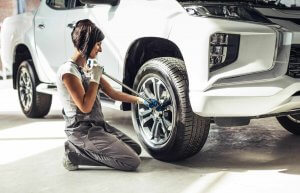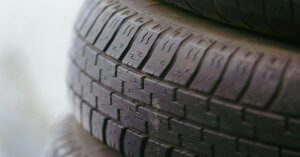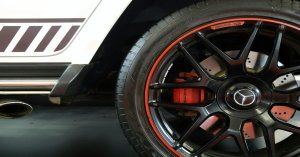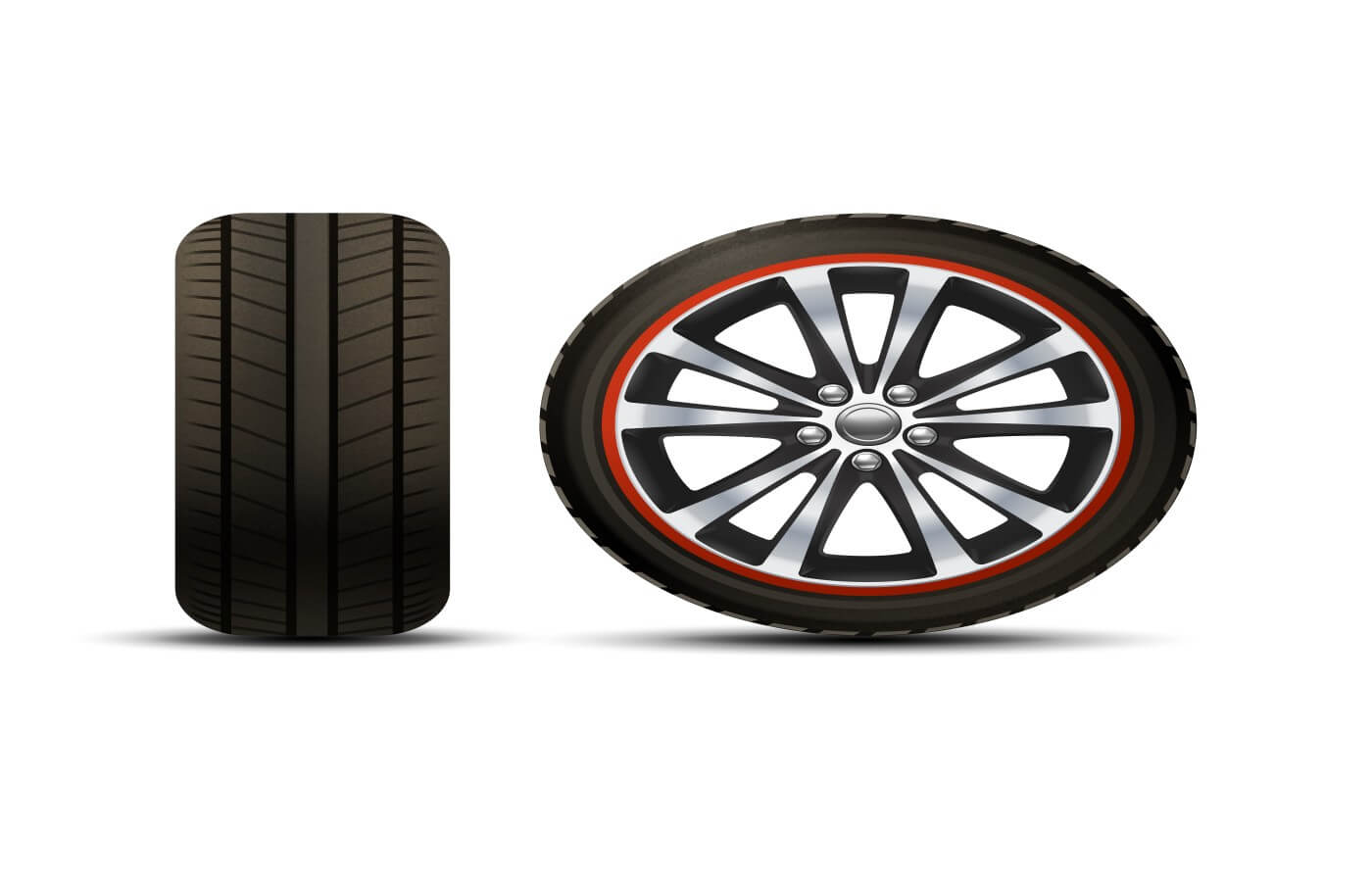Tyres are not just rubber rings; they are the unsung heroes of your car. They carry you and your vehicle from one point to another, being the single point of contact between the road and your vehicle.
However, despite their importance, many people overlook the importance of a well-functional tyre when driving. Tyres play a crucial role in road safety, handling, and fuel efficiency.
This blog explains everything you need to know about car tyres and their significance for safe driving. In this comprehensive article, we’ll delve into the ABCs of tyres, covering everything you need to know to ensure your tyres are in top condition and your journeys are safe and smooth.
-
Table of Contents
Stands For Anatomy: Demystifying Tyre Design

A tyre is not just a wheel but a complex piece of engineering, with several components working together:
- Tread: This is the grooved outer layer of the tyre that makes contact with the road. The tread pattern is designed to channel water away, provide traction and maintain grip in various weather conditions, and provide a comfortable ride.
- Belts: Belts are layers of steel or fabric embedded within the tyre’s carcass to provide stability and reinforcement.
- Sidewalls: The sidewall is the vertical area of the tyre between the tread and the bead. It contains important information such as tyre size, load index, and speed rating.
- Plies: These are layers of fabric or cord that give the tyre its shape and strength.
- Inner Liner: This airtight layer holds the air pressure inside the tyre.
- Bead: This is the stiff section that grips the rim of the wheel, securing the tyre to the car.
Understanding the various components of a tyre is crucial for proper maintenance and troubleshooting.
-
Stands For Buying. Choosing the Good Tyre For Your Car

Choosing the right tyres for your vehicle can significantly impact safety, performance, and fuel efficiency. Here are some factors to consider when buying tyres:
- Tyre Size: Consult your vehicle’s owner’s manual or the placard on the driver’s side door jamb to determine the correct tyre size for your car.
- Tyre Type: Select tyres suitable for your driving conditions, terrain, and preferences, such as all-season, summer, or winter tyres. There is a wide range of tyres available on the market, and choosing
There is a wide range of tyres available in the market and choosing the right one according to the specific needs such as the make and model of the car, the geographic region, seasons etc are very important.
-
Summer Tyre:
Summer tyres are also called standard tyres. They are designed to deliver a high level of performance in normal to hot regions. They provide greater traction on dry and wet roads.
They have a softer rubber compound to enhance stability and grip, and they sport a tread pattern that provides resistance against aquaplaning.
-
Winter Tyre
In cold places and places with snow, it is advised to go for winter tyres, as they are safer. The design of a winter tyre has a large number of grooves and spikes to offer greater traction and grip on snowy, icy, and wet surfaces.
They are optimised to remain flexible in extreme cold temperatures. As India mostly lies in the sub-tropical zone and a very small part of it is subjected to extreme cold weather, standard tyres are mostly used in India.
Winter tyres use more silica with a higher number of treads and spikes in comparison with normal or summer tyres.
-
All-Season Tyre
All-season tyres are made by combining summer and winter tyre technologies. They provide adequate performance in all seasonal conditions.
-
All-Terrain Tyre
SUVs, light trucks, and other bigger vehicles with four-wheel drive often have all-terrain tyres. These tyres are designed for highways, gravel roads, mountainous regions, light snow, and some off-roading. They are designed for all types of weather, including light snow.
All-terrain tyres give the driver the versatility to tackle rugged landscapes as well as four-lane highways with ease. They are perfect for drivers who often go on adventurous trips.
-
High-Performance Tyre
They are also called sports tyres. High-performance tyres are made from the best softer rubber and feature more rigid sidewalls that enable better traction at higher speeds.
High-performance tyres give a smoother driving experience overall. They are designed for enthusiastic drivers who prioritise high-speed handling and superior performance.
-
Run Flat Tyre
Run-flat tyres are specially designed to allow continued driving for a limited distance after a puncture or a loss of air pressure. They come with strengthened sidewalls that provide support for the vehicle’s weight even if the tyre loses air.
These types of tyres provide extended mobility. By using run-flat tyres, drivers eliminate the need for a spare tyre, thereby decreasing the total weight of the vehicle and creating extra room for storage.
Run-flat tyres are mostly not repairable when they have been driven for a while. Replacements may be required.
-
Mud-Terrain Tyre
Mud-terrain tyres are specially built for tackling deep mud, slippery surfaces, and challenging off-road conditions. They are the preferred option for avid road enthusiasts and individuals who often face muddy terrain challenges.
These types of tyres have aggressive tread patterns with deep grooves called “lugs,” which provide enhanced grip in thick, muddy, and slushy terrain.
-
Tyre Construction
Tyres are built using different construction methods, which affect their performance and characteristics.
-
Radial Tyre
Radial tyres are the most common type of tyre used in modern Vehicles Of All Time. They feature a vertical sidewall and consist of a single layer of steel cord piles running perpendicular to the tyre’s centerline.
Advantages of radial tyres
- Good steering and better road contact
- Improved driving comfort thanks to the flexible side wall
- Minimal heat is generated within the tyre when travelling at high speeds.
- Higher resistance against tread-related damage
- Lower fuel consumption
Disadvantages of radial tyres
- Less stable side wall under heavy loads
- Prone to sidewall impacts more frequently
- Diagonal tyres
-
Diagonal tyres
Diagonal tyres have been used instead of solid rubber tyres for a long time. They were a standard feature before radial tyres were introduced. Diagonal tyres are constructed with layers of casing comprised of nylon cord.
They are placed diagonally across each other in the tread and the side wall, at an angle of 55 degrees. Diagonal tyres are used, for example, to perform activities in ports often on reach stackers.
- Tread Pattern: The tread pattern affects traction, handling, and noise levels in tyres. Select a tread pattern that matches your driving requirements.
- Tyre Brand and Quality: buy from reputed tyre brands known for their quality, reliability, and safety standards.
- Load Index and Speed Rating: Ensure that the tyres meet or exceed the load index and speed rating requirements specified for your car.
Investing in the right tyres can improve your driving experience and significantly contribute to overall safety on the road.
-
Stands For Care: Maintaining Your tyre For Optimal Performance.

Proper tyre maintenance is essential for ensuring optimal performance, longevity, and safety. Here are some key aspects of tyre care:
- Tyre Pressure: Check tyre pressure regularly using a tyre pressure gauge and inflate tyres to the recommended psi (pounds per square inch) as specified by the manufacturer. Impaired handling, reduced fuel efficiency, and accelerated tyre wear can result from underinflated or overinflated tyres.
- Tyre Rotation: Rotate tyres regularly to promote even wear and extend tyre life. Adhere to the advised rotation sequence specified in your car’s owner’s manual.
- Wheel Alignment: Ensure proper wheel alignment to prevent uneven tyre wear and maintain vehicle stability and handling. Have the alignment checked periodically, especially after hitting potholes or curbs.
- Tyre Balancing: Balancing tyres ensures smooth and even tyre wear by compensating for imbalances in the tyre and wheel assembly.
- Tyre Inspection: Regularly inspect tyres for signs of damage, such as cuts, bulges, cracks, or uneven wear. Replace tyres if they show excessive wear or damage that compromises safety.
- Tyre Storage: If storing tyres for an extended period, clean and dry them thoroughly before storage, and store them in a cool, dry place away from sunlight and ozone-producing sources.
Conclusion
Tyres are a major component of vehicle safety and performance, yet they often receive insufficient attention from drivers. By understanding the basics of tyre anatomy, selecting the right tyres for your vehicle,
and practising proper tyre care and maintenance, you can ensure that your tyres deliver optimal performance, longevity, and safety on the road. Remember,
your tyres are the only point of contact between your vehicle and the road, so it pays to give them the attention they deserve. Contact VehicleCare or visit our workshops if you are looking for any tyre-related service.


